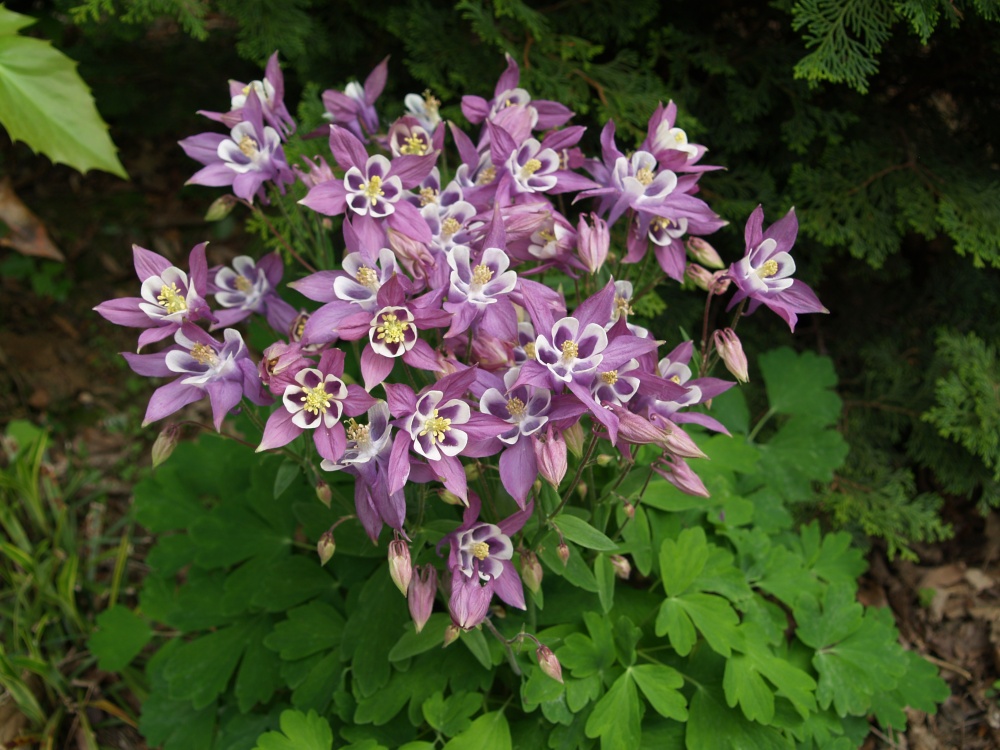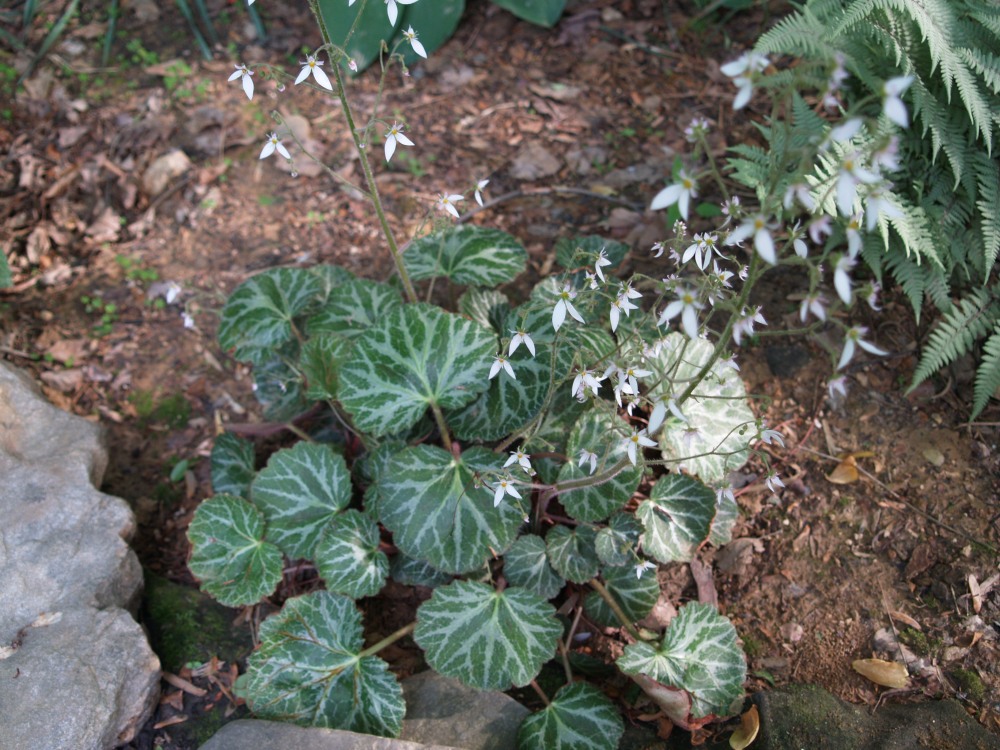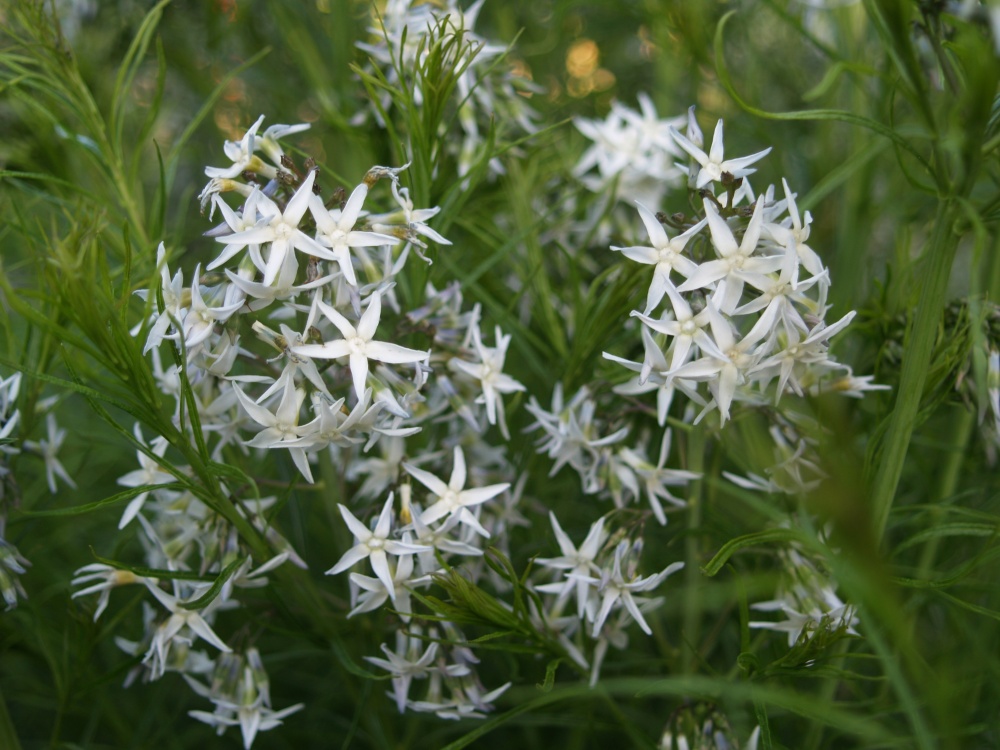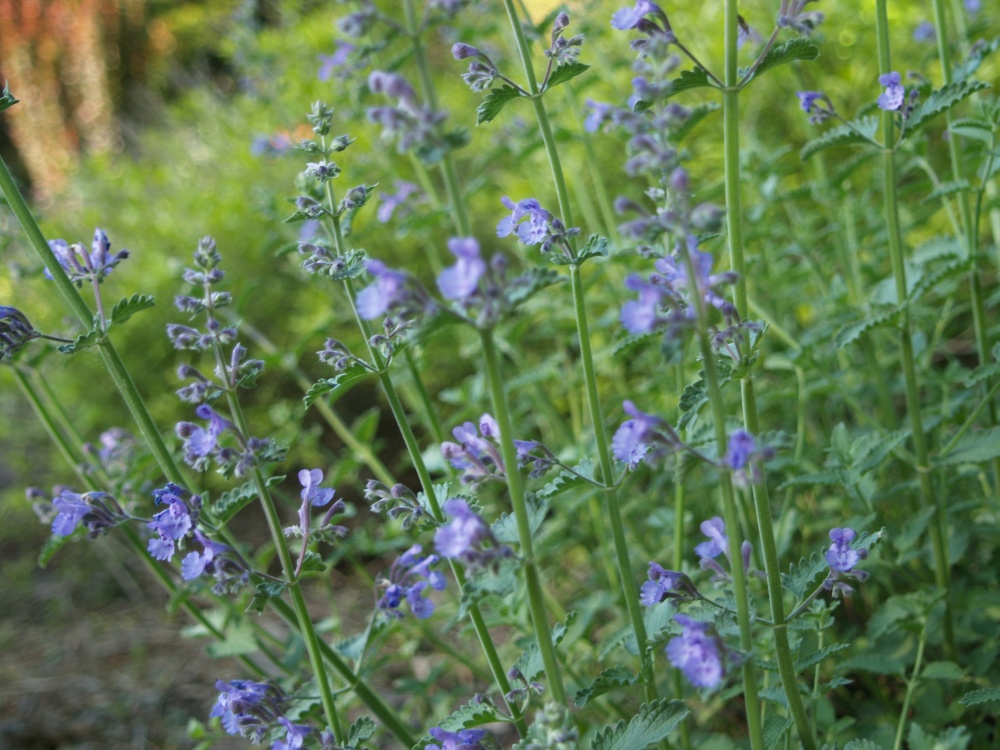….. and watch it grow.
The bulk of the spring’s garden chores were accomplished one March weekend when I was feeling particularly spry, and though every muscle in my body ached on Monday, it was good to be finished. In a large garden there are always weeds and small tasks to keep the gardener occupied, but with the heavy lifting out of the way I’ve been able to plant and enjoy through much of April and early May. With recent warm temperatures, the garden has exploded with lush growth and blooms, and each afternoon as I stroll the garden there is no place that I’d rather be.
I mentioned the columbines (Aquilegia, above) a week or two earlier when they first began to bloom, and as they fully opened I’ve decided that some of the seedlings are better than the named cultivars. In fact, I should admit that it’s unlikely that any of the columbines are the original plants since they are fairly short lived perennials. But, in a year or two a few plants will turn into dozens if the seedlings are encouraged to remain. The seedlings might be similar, or not even close in appearance to the parent plants. Most are similar, but with some that are short and compact, and a few three times the size with large flowers and coarse foliage.
Another enthusiastic spreader is the Strawberry geranium (Saxifraga stolonifera, above), which is not a geranium at all, but a vigorous perennial with delightful foliage. Rather than by seed, it spreads by sending out many tiny branchlets with small plants at the tips which root along the way. The small blooms stand on tall, airy stems and must be enjoyed close up. The strawberry geraniums are planted beside a shady stream that winds down to one of the garden’s ponds, and to view them at close range entails straddling the narrow creek, and kneeling on moss covered stones. I usually end up with a foot in the water, or worse, but it’s all for a good cause.
Blue Star (Amsonia hubrichtii, above) spreads itself very slowly from a mounded, woody crown, and though it is best showcased planted in mass, I’ve only one that pokes out from between a few shrubs. It’s blooming period is quite brief, but its main attraction is as a textural contrast to broadleaf plants with its narrow, needle-like foliage, and glowing yellow autumn foliage color. The blue star is planted in the driest, sunniest spot in the garden, in poor, rocky soil that was excavated from the swimming pond, but it seems unbothered by the abuse.
On the far side of the swimming pond, in similarly poor soil, several catmints (Nepeta, above) fight it out with taller shrubs and perennials for their spot in the sun. The ones with more sunlight thrive and bloom robustly, but the few that are more shaded are not so happy. 
Along a shallow swale that trickles water from a spring through the summer, and with occasional heavier overflow from the swimming pond, Spanish bluebells (Hyacinthoides hispanica, above) have adjusted and thrive in the damp environment. The original dozen or two bulbs have quickly multiplied to form a nice mass that blooms from late in April for several weeks into May. In this area I had intended to plant Camassia (Camasia quamash, below), which are well suited to damp soils, but when I have a few boxes of bulbs there is no telling which are planted where (until they pop out of the ground in the spring). In any case, the camassias are happy in the dry, shady front garden, and the Spanish bluebells are quite content where they are, so every one’s happy. 